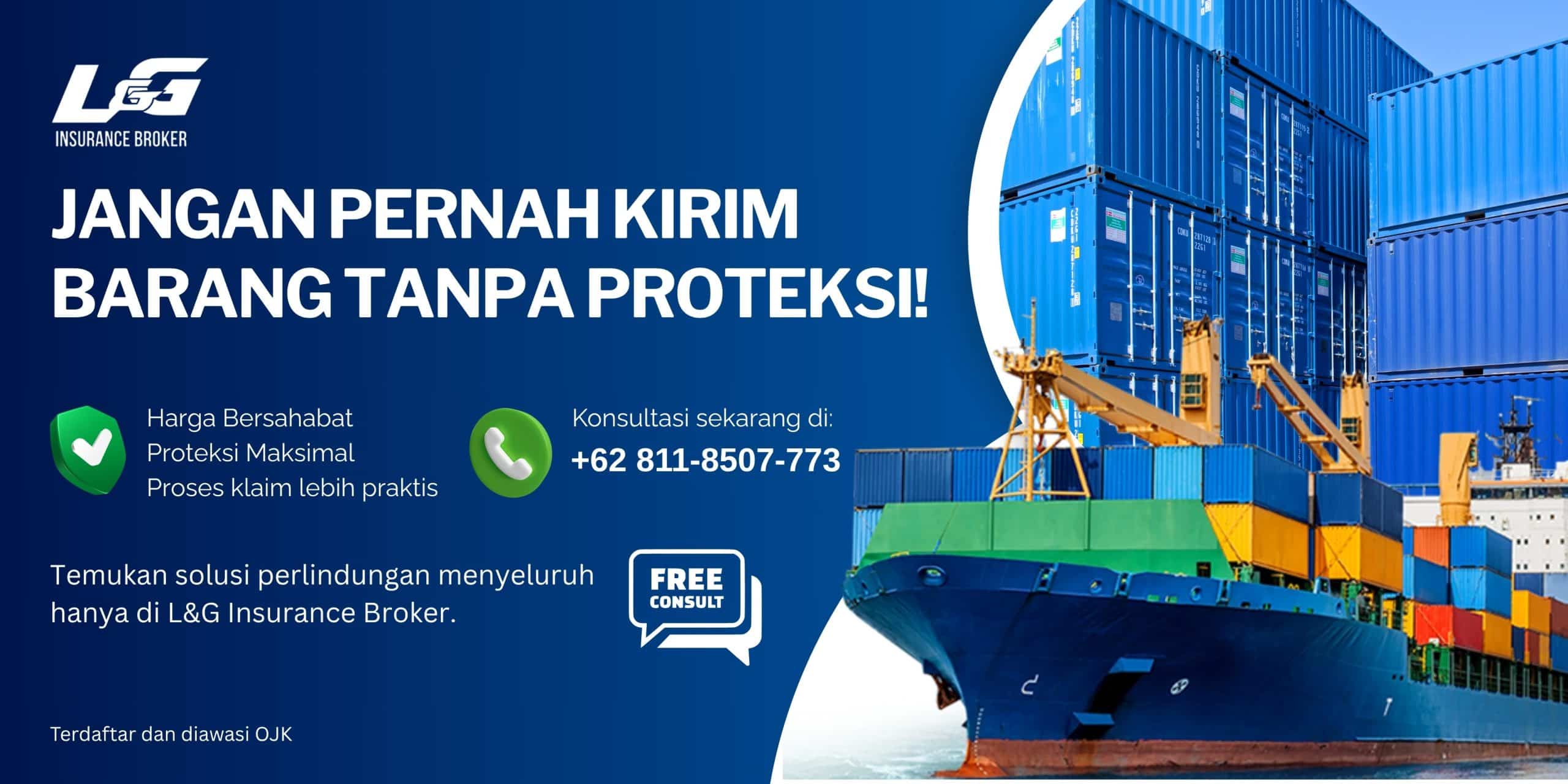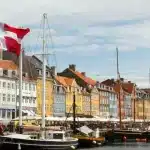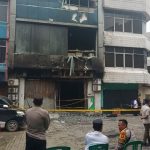Liga Asuransi – Dear Risk Managers and Risk Takers,
Today, we invite you to embark on a journey with us—a journey into the heart of risk and insurance in the transportation sector, where the challenges are as vast as the oceans themselves, and the stakes are nothing short of monumental. Together, we shall delve into the intricacies of transporting commodities like copper ore, navigating the turbulent waters of uncertainty with poise and precision.
As we unravel the complexities of this critical industry, we call upon you, the vanguards of risk management, to join us in exploring the strategies, solutions, and insights that shape the world of transportation risk. And in the spirit of collaboration and shared knowledge, we urge you to not only read but also share this article with your peers, enriching the collective wisdom of our community and fortifying our collective resilience in the face of adversity.
UNDERSTANDING THE COPPER ORE
Copper ore holds significant importance across various industries in Indonesia due to its versatile applications and essential role in economic development. In construction and infrastructure projects, copper is indispensable for electrical wiring, plumbing, roofing materials, and structural components, thanks to its excellent conductivity, durability, and corrosion resistance. Similarly, in the electronics and technology sectors, copper is a vital component in circuit boards, electrical connectors, motors, transformers, and telecommunications equipment, facilitating the transmission of electricity and data in electronic devices, appliances, and communication networks.
Moreover, copper plays a crucial role in manufacturing processes and machinery production, where it is used in bearings, gears, valves, heat exchangers, and other mechanical components, leveraging its thermal conductivity, malleability, and antimicrobial properties for various industrial applications. In transportation and automotive industries, copper is utilized in vehicle wiring harnesses, engine components, brake systems, and fuel lines, contributing to the efficiency, safety, and performance of vehicles, trains, ships, and aircraft. Furthermore, copper is instrumental in energy production and renewable resources, particularly in electrical power generation, transmission, and distribution, powering power cables, transformers, wind turbines, solar panels, and energy storage systems, thereby supporting the expansion of renewable energy sources and sustainable power generation initiatives.
Additionally, copper’s antimicrobial properties make it valuable in healthcare and medical applications, where it is employed in hospital equipment, surgical instruments, antimicrobial coatings, and medical devices, aiding infection control and patient safety in healthcare settings. Lastly, copper’s aesthetic appeal and artistic versatility make it a popular choice for jewelry, decorative arts, and interior design, allowing artisans and designers to create intricate designs, sculptures, and home decor items that showcase copper’s unique properties. In summary, copper ore is integral to Indonesia’s industries, contributing to economic growth, technological innovation, and cultural expression across diverse sectors.
THE RISKS ASSOCIATED WITH THE TRANSPORTATION OF COPPER ORE
The following arises from multiple factors and stages of the transportation process, ranging from extraction at the mine site to delivery at processing plants or export terminals. Here are the key risks associated with copper ore transportation:
Physical Damage and Contamination
Handling and transporting bulk materials like copper ore can lead to physical damage, spillage, or contamination during transit. Mishandling, improper loading or unloading procedures, equipment failures, or environmental factors can cause material degradation, product loss, and contamination, compromising the quality and value of the cargo.
Operational Disruptions
Operational disruptions such as delays, breakdowns, and supply chain interruptions can impact copper ore transportation. Adverse weather conditions, road closures, traffic congestion, equipment failures, labor strikes, or regulatory issues can disrupt transportation schedules, causing delays in delivery, production downtime, and financial losses for stakeholders.
External Risks and Security Threats
External risks such as accidents, theft, vandalism, piracy, and security breaches pose significant challenges to copper ore transportation. Vehicular accidents, cargo theft, or security incidents along transportation routes can jeopardize the safety and security of copper shipments, leading to cargo loss, property damage, legal liabilities, and reputational harm.
Regulatory Compliance and Permitting
Compliance with regulatory requirements, environmental standards, and transportation permits is essential for copper ore transportation operations. Failure to adhere to regulatory guidelines, obtain necessary permits, or comply with transportation regulations can result in fines, penalties, legal disputes, and operational disruptions, impacting the continuity and legality of transportation activities.
Environmental and Safety Hazards
Transporting copper ore presents environmental and safety hazards, particularly in terms of spillage, pollution, and hazardous materials management. Accidental spills, leaks, or releases of copper ore or associated chemicals can contaminate soil, waterways, and ecosystems, posing environmental risks and requiring cleanup efforts to mitigate environmental damage and regulatory non-compliance.
Market and Economic Factors
Market volatility, fluctuations in commodity prices, and economic uncertainties can affect the profitability and viability of copper ore transportation operations. Changes in demand, supply dynamics, currency exchange rates, and geopolitical factors can impact transportation costs, revenues, and market competitiveness, influencing decision-making and risk management strategies.
Technological and Infrastructure Challenges
Technological limitations, infrastructure deficiencies, and logistical constraints can impede efficient copper ore transportation. Inadequate transportation infrastructure, outdated equipment, or lack of access to modern transportation technologies may hinder transportation efficiency, capacity, and safety, requiring investments in infrastructure development and technological upgrades.
TYPES OF TRANSPORTATION MODES
Copper ore is transported using various modes of transportation, each with its advantages, limitations, and suitability depending on factors such as distance, geography, infrastructure, and cost considerations. Here’s an overview of the main transportation modes used for copper ore:
Trucks
Trucks are commonly used for short to medium-distance transportation of copper ore from mines to nearby processing plants, rail terminals, or storage facilities. Trucks offer flexibility, door-to-door service, and accessibility to remote locations with limited infrastructure. However, they have limited capacity, higher operating costs per ton-mile, and are susceptible to road congestion, weather conditions, and regulatory restrictions.
Railroads
Railroads are a preferred mode of transportation for long-distance haulage of copper ore, especially from inland mines to coastal ports or processing hubs. Rail transport offers high carrying capacity, energy efficiency, and cost-effectiveness for bulk cargo movement over extended distances. Rail networks provide connectivity to major mining regions, industrial centers, and transportation hubs, facilitating intermodal transport and seamless logistics integration.
Maritime Vessels
Maritime vessels, including bulk carriers, container ships, and specialized ore carriers, are utilized for transporting copper ore over long distances via sea routes. Maritime transport is suitable for intercontinental shipments from major copper-producing regions to global markets. Bulk carriers and ore carriers offer economies of scale, low transportation costs per ton-mile, and efficient loading/unloading operations at ports. However, maritime transport involves longer transit times, port congestion, weather-related delays, and navigation risks such as piracy, storms, and accidents.
Pipelines
Pipelines are used for transporting copper ore slurry or concentrates from mines to processing plants or export terminals, primarily in regions with significant ore deposits and pipeline infrastructure. Pipelines offer continuous, automated, and environmentally friendly transport of high-volume materials, reducing handling costs, emissions, and environmental impacts compared to conventional transportation modes. However, pipeline construction and maintenance require substantial investment, regulatory approvals, and environmental assessments, making them feasible only for specific applications and geographic conditions.
Intermodal Transport
Intermodal transport combines multiple modes of transportation, such as trucks, railroads, and maritime vessels, to optimize logistics efficiency, reduce costs, and enhance supply chain resilience. Intermodal terminals and facilities enable seamless transfer of cargo between different modes, maximizing route flexibility, service reliability, and transit time optimization. Intermodal transport is commonly used for long-distance, international shipments of copper ore, leveraging the strengths of each mode while mitigating their respective weaknesses.
TYPES OF INSURANCE
Insurance coverage options for transporting copper ore encompass various policies designed to mitigate risks, protect assets, and ensure financial stability in the event of unforeseen circumstances. Here’s an overview of the main insurance coverage options available:
Cargo Insurance
Cargo insurance provides coverage for loss or damage to the copper ore cargo during transit, including loading, unloading, and transportation by land, sea, or air. Cargo insurance compensates the insured for the value of the lost or damaged cargo, including freight charges, handling costs, and other expenses incurred due to the covered peril.
Marine Insurance
Marine insurance covers risks specific to sea transportation, including vessel accidents, maritime perils, and cargo spills. Marine insurance policies such as hull and machinery insurance, protection and indemnity (P&I) insurance, and freight insurance provide comprehensive coverage for ships, cargo, and liabilities arising from maritime operations.
Transit Insurance
Transit insurance offers coverage for risks associated with inland transportation of copper ore by road, rail, or other modes. Transit insurance policies protect against physical damage, theft, accidents, and other perils during the transit of goods from the mine site to processing plants, export terminals, or intermediate storage facilities.
Warehouse Insurance
Warehouse insurance provides coverage for storage facilities where copper ore is stored temporarily before or after transportation. Warehouse insurance policies protect against risks such as fire, theft, vandalism, natural disasters, and structural damage to the storage facility and its contents, including copper ore inventory and equipment.
Liability Insurance
Liability insurance covers third-party claims arising from accidents, injuries, property damage, or environmental pollution related to copper ore transportation operations. Liability insurance policies such as general liability insurance, pollution liability insurance, and motor carrier liability insurance protect transportation operators from legal liabilities, litigation costs, and damages awarded to third parties.
Business Interruption Insurance
Business interruption insurance compensates the insured for financial losses resulting from transportation disruptions, production downtime, or revenue loss due to covered perils. Business interruption insurance policies provide reimbursement for lost income, extra expenses, and ongoing operating costs during the restoration period following a covered event, such as a transportation accident or supply chain disruption.
Comprehensive Insurance Packages
Some insurers offer comprehensive insurance packages tailored to the specific needs of copper ore transportation operations. These packages may combine multiple coverage options, including cargo insurance, marine insurance, liability insurance, and additional endorsements or riders to provide comprehensive protection against a wide range of risks.
Insurance brokers play a crucial role in copper ore transportation by providing expert guidance, personalized advice, and tailored insurance solutions to address the unique risks and challenges faced by transportation stakeholders. Here’s why insurance brokers are essential for copper ore transportation:
Industry Expertise
Insurance brokers specialize in understanding the intricacies of the transportation industry, including the specific risks associated with copper ore transportation. Their industry expertise enables them to assess risk exposure, identify potential hazards, and recommend insurance solutions tailored to the needs of transportation operators, ensuring comprehensive coverage and adequate protection against potential losses.
Risk Assessment and Analysis
Insurance brokers conduct thorough risk assessments and analyses to evaluate the unique risk profile of copper ore transportation operations. By identifying key risk factors, assessing exposure levels, and analyzing historical loss data, insurance brokers can develop customized risk management strategies and insurance programs to mitigate risks effectively and safeguard transportation assets.
Access to Insurance Markets
Insurance brokers have access to a wide network of insurance markets, underwriters, and carriers specializing in transportation insurance. They leverage their industry connections and market relationships to obtain competitive insurance quotes, negotiate favorable coverage terms, and secure comprehensive insurance coverage for copper ore transportation operations, ensuring optimal protection at competitive premiums.
Tailored Insurance Solutions
Insurance brokers work closely with transportation stakeholders to understand their specific insurance needs, preferences, and risk tolerance levels. Based on this information, brokers design customized insurance solutions that align with the unique requirements of copper ore transportation, offering a comprehensive suite of coverage options to address cargo risks, liability exposures, and operational vulnerabilities effectively.
Policy Procurement and Administration
Insurance brokers assist transportation operators in procuring insurance policies, completing documentation, and managing insurance administration tasks. Brokers handle policy endorsements, renewals, claims processing, and compliance requirements on behalf of their clients, streamlining insurance operations and ensuring seamless policy management throughout the insurance lifecycle.
Claims Advocacy and Support
In the event of a claim, insurance brokers serve as advocates for transportation operators, advocating on their behalf to ensure fair and timely claims settlement. Brokers facilitate communication with insurance carriers, provide claims assistance, and negotiate settlements to expedite the claims resolution process, minimizing disruption to business operations and mitigating financial losses.
Risk Management Consultation
Insurance brokers offer risk management consultation and advisory services to help transportation operators implement proactive risk mitigation measures and loss prevention strategies. By guiding safety protocols, compliance standards, and risk control measures, brokers help mitigate potential hazards, enhance operational safety, and reduce the frequency and severity of insurance claims.
Continuous Support and Review
Insurance brokers provide ongoing support and review of insurance programs to ensure they remain aligned with changing business needs, regulatory requirements, and industry trends. Brokers conduct periodic policy reviews, risk assessments, and coverage audits to identify emerging risks, adjust coverage limits, and optimize insurance programs for maximum effectiveness and value.
WHY DO YOU NEED TO USE L&G INSURANCE BROKER IN INDONESIA?
L&G Insurance Broker, the leading insurance broker in Indonesia stands as a beacon of excellence and reliability in the realm of marine insurance, offering unparalleled expertise, tailored solutions, and steadfast support to transportation stakeholders navigating the complex waters of copper ore transportation in Indonesia. As the leading insurance broker in the region, L&G brings to the table a wealth of industry experience, market knowledge, and strategic partnerships, empowering clients with the confidence and peace of mind they need to safeguard their assets and operations against the uncertainties of the maritime world.
With a dedicated team of marine specialists at the helm, L&G is committed to understanding the unique challenges and nuances of copper ore transportation, providing innovative insurance solutions that address the specific risks and exposures inherent in this dynamic sector. Whether it’s cargo protection, liability coverage, or risk management consultation, L&G goes above and beyond to deliver comprehensive insurance programs that meet the evolving needs of transportation operators, ensuring robust protection, optimal value, and uninterrupted peace of mind throughout the insurance journey.
Beyond its role as a trusted insurance advisor, L&G Insurance Broker serves as a steadfast partner and advocate for its clients, offering unwavering support, proactive guidance, and responsive assistance every step of the way. From policy procurement and claims advocacy to risk mitigation and continuous review, L&G remains firmly committed to delivering unparalleled service excellence and driving positive outcomes for its valued clients in the copper ore transportation industry.
In a world where risks abound and uncertainties loom large, L&G Insurance Broker stands as a beacon of stability, reliability, and trust, offering transportation stakeholders the reassurance and confidence they need to navigate the high seas of copper ore transportation with confidence and conviction. For those seeking superior insurance solutions, unrivaled expertise, and unwavering support, L&G Insurance Broker emerges as the undisputed partner of choice, leading the way to a brighter, safer, and more secure future on Indonesia’s maritime horizon.
For all your insurance needs, contact L&G now!
—
MARINE CARGO INSURANCE FOR COPPER ORE MORE PROFITABLE WITH MOP (Marine Open Policy) – DON’T WASTE YOUR TIME AND CALL US NOW
24 JAM L&G HOTLINE: 0811-8507-773 (CALL – WHATSAPP – SMS)
website: lngrisk.co.id
Email: customer.support@lngrisk.co.id
—






















